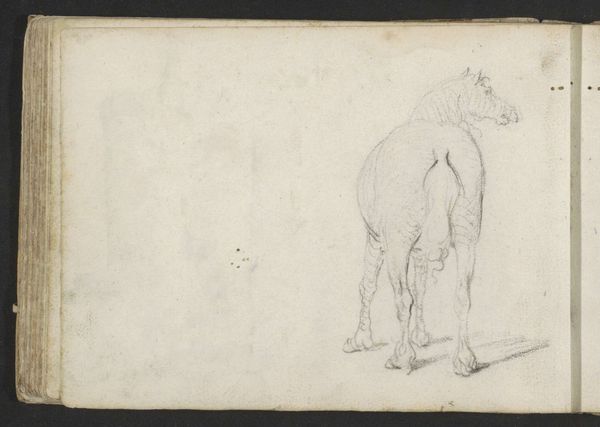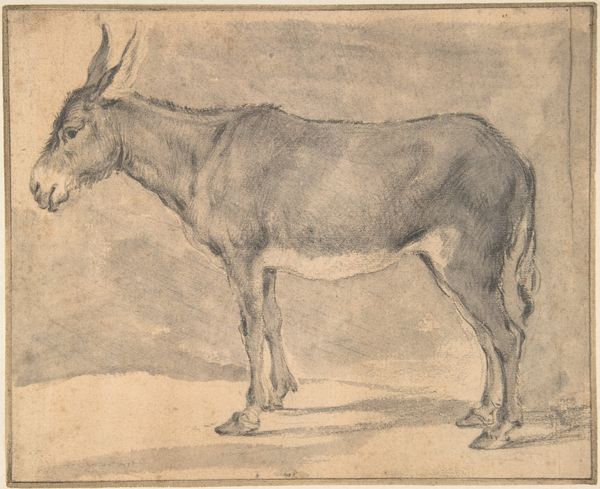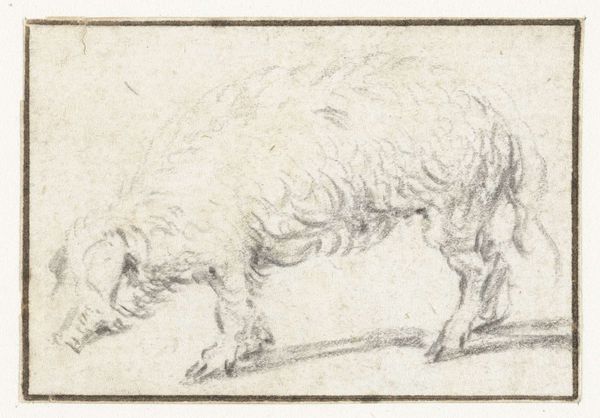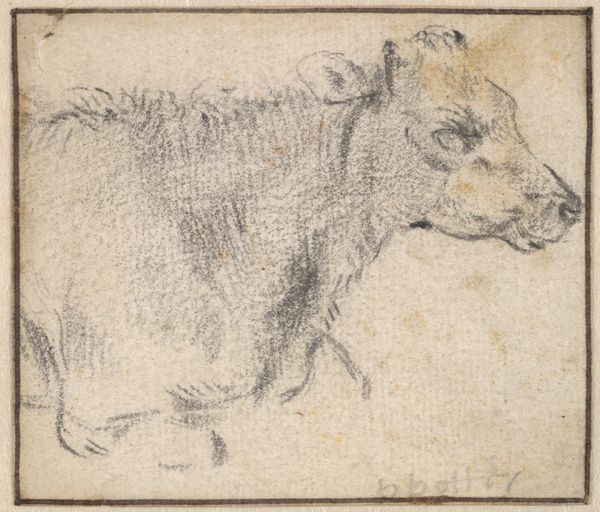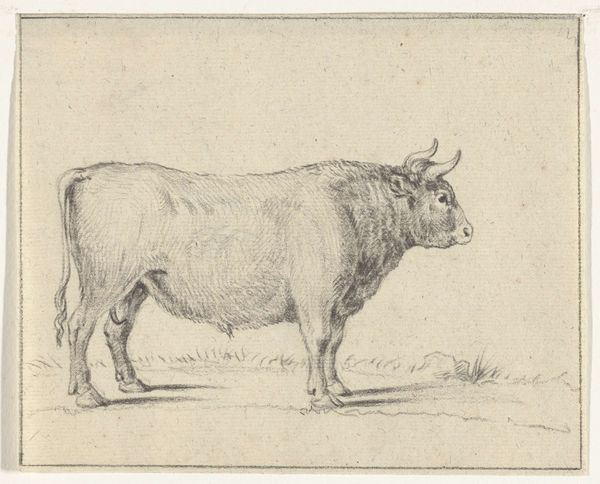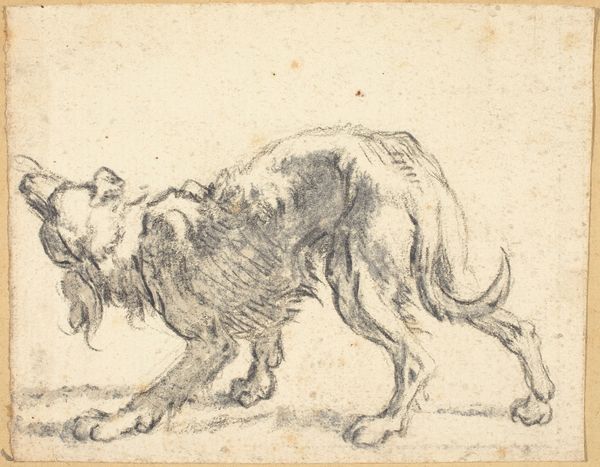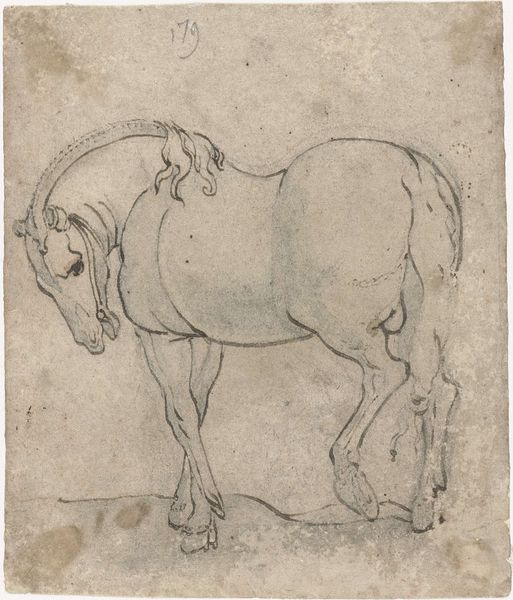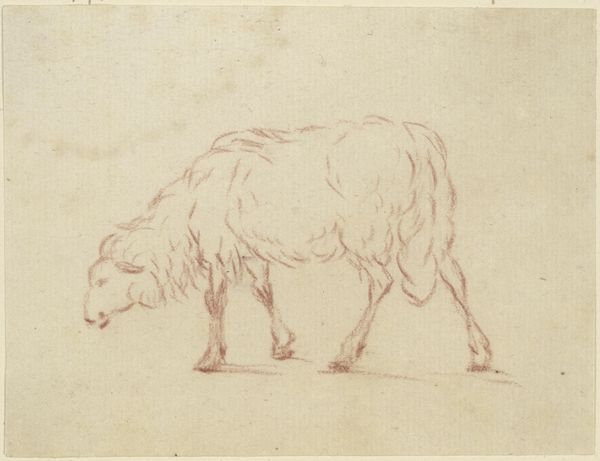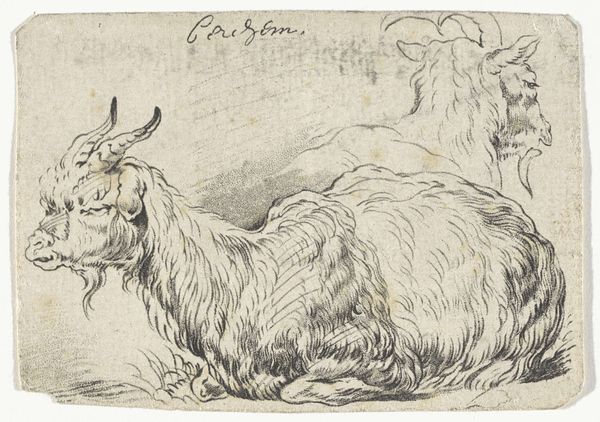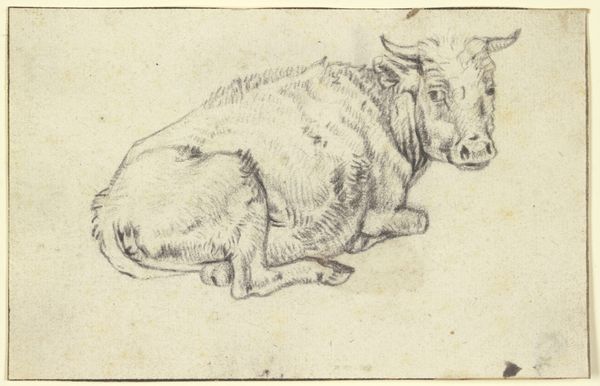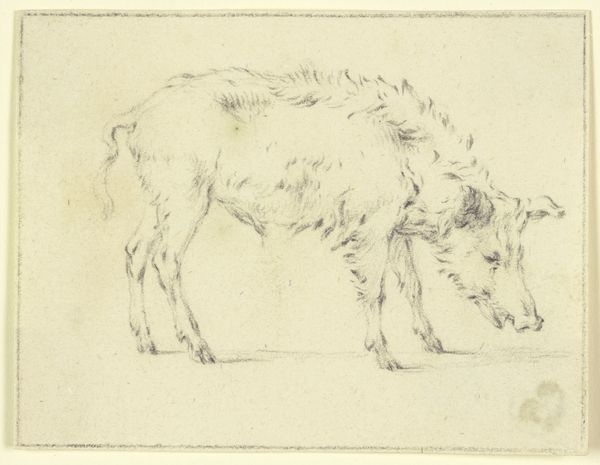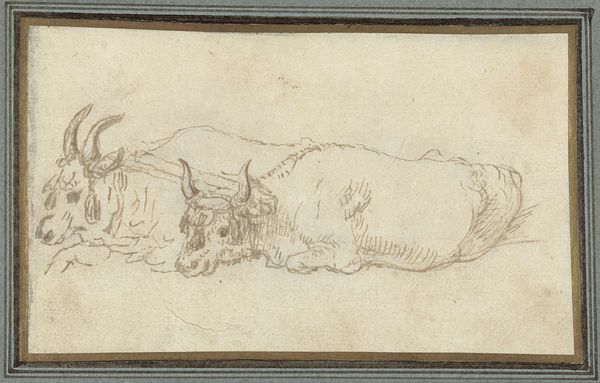
drawing
#
drawing
#
realism
Dimensions: sheet: 28.6 x 43.8 cm (11 1/4 x 17 1/4 in.)
Copyright: National Gallery of Art: CC0 1.0
Curator: Johann Elias Ridinger rendered this realistic drawing of "The Rhinoceros 'Miss Clara'" around 1748. Editor: It has an undeniable air of melancholy. I think it might be because of the grayish-blue tone of the paper and the weight of the animal seeming so heavy. Curator: I find that the image's power rests precisely in how Ridinger has made “Miss Clara” both monumental and, paradoxically, accessible to a European public. Her journey, exhibited in various locations around Europe, marks a significant moment in the understanding of exotic species and animal trade. Editor: That's where my concern starts. 'Miss Clara’ as a phenomenon reflects Europe's relentless drive to exoticize and possess the non-European world. What about her original environment? We should think about the bigger story behind this drawing and other animals similarly transported during this period. Curator: These animals served a critical function, they challenged existing scientific models. Figures like Clara became tools for circulating knowledge, allowing naturalists and even everyday people to experience "living specimens" that challenged encyclopedic knowledge. We must acknowledge these contradictions in tandem. Editor: Exactly! We must discuss the commodification of exotic life, alongside the advance of scientific knowledge, that helped to legitimize imperial ambitions and exploitation. Consider the imbalance in power, and what "Miss Clara" the rhino had to endure. What did her existence signify? Curator: Placing her within her time makes “Miss Clara’s” portrait not just an artistic study but an intriguing glimpse into Enlightenment society’s engagement with the natural world. While art played an undeniable role in shaping worldviews, this drawing embodies this complex relationship. Editor: I agree completely, and feel this image invites reflection. Thinking critically, in particular, prompts us to interrogate those structures still present in how we understand, represent, and interact with nature today. The drawing acts like a document connecting past to present issues.
Comments
No comments
Be the first to comment and join the conversation on the ultimate creative platform.
